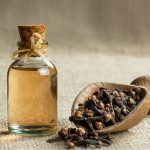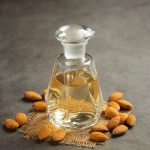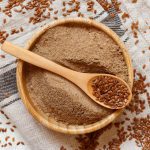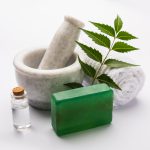Alarm bells inevitably tend to go off when you see your child scratching their head.…
Read MoreWe can’t help but get a little worried when we notice hair falling out as we brush – it’s an instinctive feeling. But it’s normal to lose around 50 to 100 hairs per day. This won’t actually affect how thick your hair is because new hair is constantly replacing the hair that we lose. However, sometimes this cycle goes out of balance and hair starts to thin out. And hair loss can be quite distressing.
Two kinds of hair loss – khalitya (gradual hair loss) and indralupta (sudden hair loss) – are described in ayurvedic texts. Acharya Charaka classified it under shiroroga. Khalitya is primarily a pitta dominant tridosha janya yyadhi i.e. vata, pitta, kapha with rakta dosha.
Many factors can lead to hair loss. Here’s a look at the main causes of this condition:
Family History: The most common kind of hair loss is hereditary in nature and occurs as we age. This is also known as male-pattern baldness or female-pattern baldness or androgenic alopecia. Hair loss typically occurs in a certain pattern such as a receding hairline in men and hair loss along the crown for women.
Physical Or Emotional Stress: Some people experience thinning of hair for months after experiencing an emotionally or physically stressful event. However, this tends to be temporary in nature.
Nutritional Deficiencies: Not getting sufficient amounts of nutrients such as iron, protein, zinc, and biotin can lead to hair loss.[1][Hair Loss]. Harvard Health Publishing.
Medical Conditions And Hormonal Changes: Medical conditions such as scalp infections or alopecia areata (an immune system disorder which leads to patchy hair loss) can cause hair loss. So can hormonal changes caused by menopause, pregnancy, or thyroid problems, PCOD.
Supplements And Medicines: Hair loss can occur as a side effect of certain medications and supplements. These can include medicines used to treat heart problems, cancer, depression, arthritis, high blood pressure etc. Speak to your doctor to find out if any medication or supplement you’re on causes hair loss.
Certain Hair Treatments And Hairstyles: Hairstyles that pull your hair tight as well as harsh hair treatments can lead to hair loss.[2][Hair loss]. Mayo Clinic.
Sleep Disturbance: While sleep has a direct impact on the human body’s natural hormones, it means that poor sleep reduces the amount of melatonin, potentially causing hair loss. Lack of sleep will stress people. The psychological stress response has been shown to lead to hair loss due to telogen effluvium.
Digestive Disorder: Poor digestive system and related disorders due to irregular eating habits, trending diets, lifestyle irregularities etc. can lead to lack of nutrition for hair leading to thinning of hair.
Meanwhile, according to ayurveda, an imbalance in the doshas is considered to lead to hair loss – specifically pitta is thought to combine with kapha or vata to destroy hair. Ayurveda also suggests that people of pitta prakriti experience graying of hair as well as hair fall earlier than people with other constitutions. This is thought to be due to the usna guna (quality of heat) of pitta dosha. An improper diet, improper lifestyle practices, premature aging (and aging), problems with asthi dhatu (bone tissue), dandruff, as well as psychological factors such as anger etc. are considered to promote hair loss.
Here are a few measures that can help control hair fall:
Prevention is always better than cure. And the way to prevent hair fall is by avoiding factors that can cause it. According to Ayurveda, the following factors can lead to hair fall and should be avoided:
While vitamins, minerals, and other nutrients play a vital role in keeping us healthy, too much of a good thing can be harmful. Excessive amounts of nutrients like vitamin E, vitamin A, and selenium have been linked to hair loss. So it’s a good idea to get tested to find out if you are deficient in a nutrient before taking a supplement.[11][HAIR LOSS: TIPS FOR MANAGING]. American Academy of Dermatology Association.
Fresh veggies and herbs offer a lot of health benefits. One study found that they might be beneficial in preventing androgenetic alopecia. Consuming raw vegetables (3 or more times weekly) and fresh herbs (3 or more regularly) as part of the Mediterranean diet was found to have a protective effect against androgenetic alopecia.[12]Fortes, Cristina, S. Mastroeni, T. Mannooranparampil, D. Abeni, and A. Panebianco. “Mediterranean diet: fresh herbs and fresh vegetables decrease the risk of Androgenetic Alopecia in … Continue readingThe Mediterranean diet also includes elements like:
Soy is a source of high-quality protein and contains all the essential amino acids. It also contains compounds known as phytoestrogens which act like the female hormone estrogen. And adding soy foods to your diet can be beneficial for preventing hair loss. One study found that frequent soy bean drink consumption may have a protective effect against androgenetic alopecia.[14]Lai, Ching-Huang, Nain-Feng Chu, Chi-Wen Chang, Shu-Li Wang, Hsin-Chou Yang, Chi-Ming Chu, Chu-Ting Chang et al. “Androgenic alopecia is associated with less dietary soy, higher blood vanadium … Continue reading[15][Soybeans and soy foods].Better Health Channel.
Avoid hairstyles that pull your hair tight. That’s because constant pulling can result in hair breaking off or falling out. Over a period of time, you can even damage your hair follicles leading to permanent hair loss. This means it’s best to steer clear of tight ponytails, buns, dreadlocks, and braids. Hair extensions and weaves can also cause damage.[16][HAIRSTYLES THAT PULL CAN LEAD TO HAIR LOSS].American Academy of Dermatology Association.
Treat your hair gently. Harsh hair treatments can damage hair and cause hair loss. Here are a few tips to keep in mind:
Smoking is linked to many harmful conditions such as heart disease, stroke, cancer, lung diseases, chronic obstructive pulmonary disease, and diabetes.[18][Smoking & Tobacco Use].CDC.And if that’s not reason enough to quit it can also worsen hair loss because it causes inflammation throughout your body.[19][HAIR LOSS: TIPS FOR MANAGING]. American Academy of Dermatology Association.
The practice of instilling oil or medicine in the nostrils is known as “nasya” – it’s one of five types of panchakarma described in ayurvedic texts. According to Ayurveda, administering nasal drops of “anu tail”, which is a medicinal nasal drop that contains many herbs can be beneficial in preventing hair fall and promoting hair growth. Anu tail should ideally be administered during spring, autumn, and the rainy season when it’s not cloudy. Do check with your ayurvedic doctor to find out if nasya therapy is suitable for you and make sure you follow the proper procedure for nasya advocated by your doctor. And keep in mind that overexertion after nasya can actually promote hair loss.[20]Shivgotra, Rachin. “Conceptual Study of Khalitya and its Management.”[21][Importance of Nasya in Today’s Era: A Practical Approach]. Central Council for Research in Ayurvedic Sciences.
Ayurveda recommends regularly oiling your hair. Of course, many of us already do this as part of our hair care regimen. But did you know that certain oils can promote hair growth? Try the following hair oils to control hair fall:
Test all new hair care ingredients on a small patch of skin first to make sure that you do not react adversely to it before applying it on your scalp.
References
| ↑1, ↑5 | [Hair Loss]. Harvard Health Publishing. |
|---|---|
| ↑2 | [Hair loss]. Mayo Clinic. |
| ↑3, ↑20 | Shivgotra, Rachin. “Conceptual Study of Khalitya and its Management.” |
| ↑4 | Kumari, Manju, Anita Sharma, and Sharad Morte Porte. “AYURVEDIC METHOD OF DIAGNOSIS, PREVENTION AND CURE OF HAIR FALL (ALOPECIA).” (2017). |
| ↑6, ↑11, ↑17, ↑19 | [HAIR LOSS: TIPS FOR MANAGING]. American Academy of Dermatology Association. |
| ↑7 | [Protein].Better Health Channel. |
| ↑8 | [Biotin]. National Institutes of Health. |
| ↑9 | [Iron]. National Institutes of Health. |
| ↑10 | [Zinc]. National Institutes of Health. |
| ↑12 | Fortes, Cristina, S. Mastroeni, T. Mannooranparampil, D. Abeni, and A. Panebianco. “Mediterranean diet: fresh herbs and fresh vegetables decrease the risk of Androgenetic Alopecia in males.” Archives of dermatological research 310, no. 1 (2018): 71-76. |
| ↑13 | [A practical guide to the Mediterranean diet].Harvard Health Publishing. |
| ↑14 | Lai, Ching-Huang, Nain-Feng Chu, Chi-Wen Chang, Shu-Li Wang, Hsin-Chou Yang, Chi-Ming Chu, Chu-Ting Chang et al. “Androgenic alopecia is associated with less dietary soy, higher blood vanadium and rs1160312 1 polymorphism in Taiwanese communities.” PloS one 8, no. 12 (2013): e79789. |
| ↑15 | [Soybeans and soy foods].Better Health Channel. |
| ↑16 | [HAIRSTYLES THAT PULL CAN LEAD TO HAIR LOSS].American Academy of Dermatology Association. |
| ↑18 | [Smoking & Tobacco Use].CDC. |
| ↑21 | [Importance of Nasya in Today’s Era: A Practical Approach]. Central Council for Research in Ayurvedic Sciences. |
| ↑22 | Suraja, R., G. Rejitha, Sunilsona B. Anbu Jeba, K. Anandarajagopala, and P. Promwichita. “In vivo hair growth activity of Prunus dulcis seeds in rats.” Biol Med 1, no. 4 (2009): 34-8. |
| ↑23 | Omar, Syed Haris. “Oleuropein in olive and its pharmacological effects.” Scientia pharmaceutica 78, no. 2 (2010): 133-154. |
| ↑24 | Tong, Tao, Nahyun Kim, and Taesun Park. “Topical application of oleuropein induces anagen hair growth in telogen mouse skin.” PLoS One 10, no. 6 (2015): e0129578. |
| ↑25 | India, MumbaL. “Effect of mineral oil, sunflower oil, and coconut oil on prevention of hair damage.” j, Cosmet. Sci 54 (2003): 175-192. |
| ↑26 | Yang, Fei-Chi, Yuchen Zhang, and Maikel C. Rheinstädter. “The structure of people’s hair.” PeerJ 2 (2014): e619. |
| ↑27 | Sharquie, Khalifa E., and Hala K. Al‐Obaidi. “Onion juice (Allium cepa L.), a new topical treatment for alopecia areata.” The Journal of dermatology 29, no. 6 (2002): 343-346. |
| ↑28 | Truong, Van-Long, Young-Sam Keum, and Woo-Sik Jeong. “Red ginseng oil promotes hair growth and protects skin against UVC radiation.” Journal of Ginseng Research (2021). |


With 13+ years of experience in Ayurvedic consultation & Allopathic treatment (ICU & General Hospital), Dr. Kalpana Dongare is adept in the treatment of infertility, PCOD, Joint disease, Skin diseases, etc with more than 95% patient follow up and more than 80% success rate. She is also an expert in all types of Panchkarma procedures.

Alarm bells inevitably tend to go off when you see your child scratching their head.…
Read More
Sometimes hair loss can be caused by fairly simple things like hot oil hair treatments,…
Read More
Don’t we all feel a tinge of envy when we see a shampoo ad? Who…
Read More
We all want to have healthy, beautiful hair. But sometimes harsh chemical products can do…
Read More